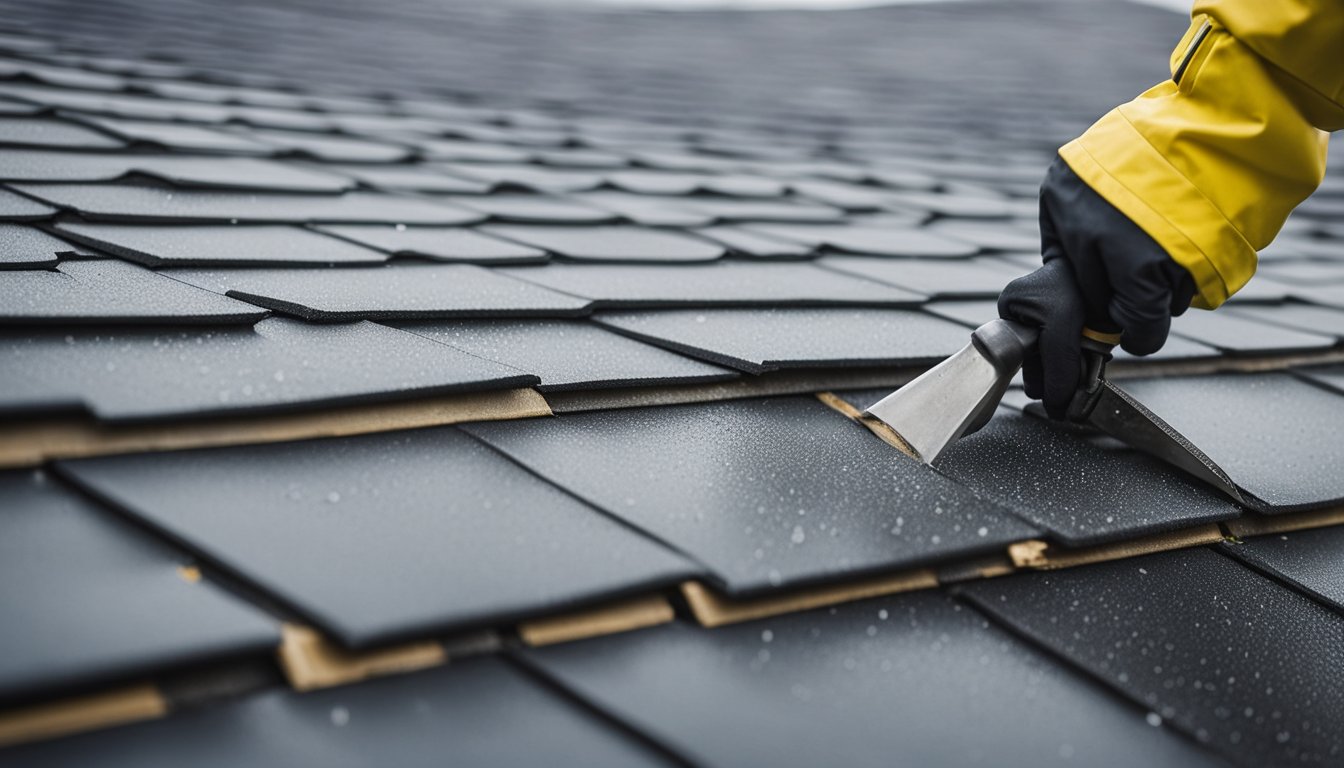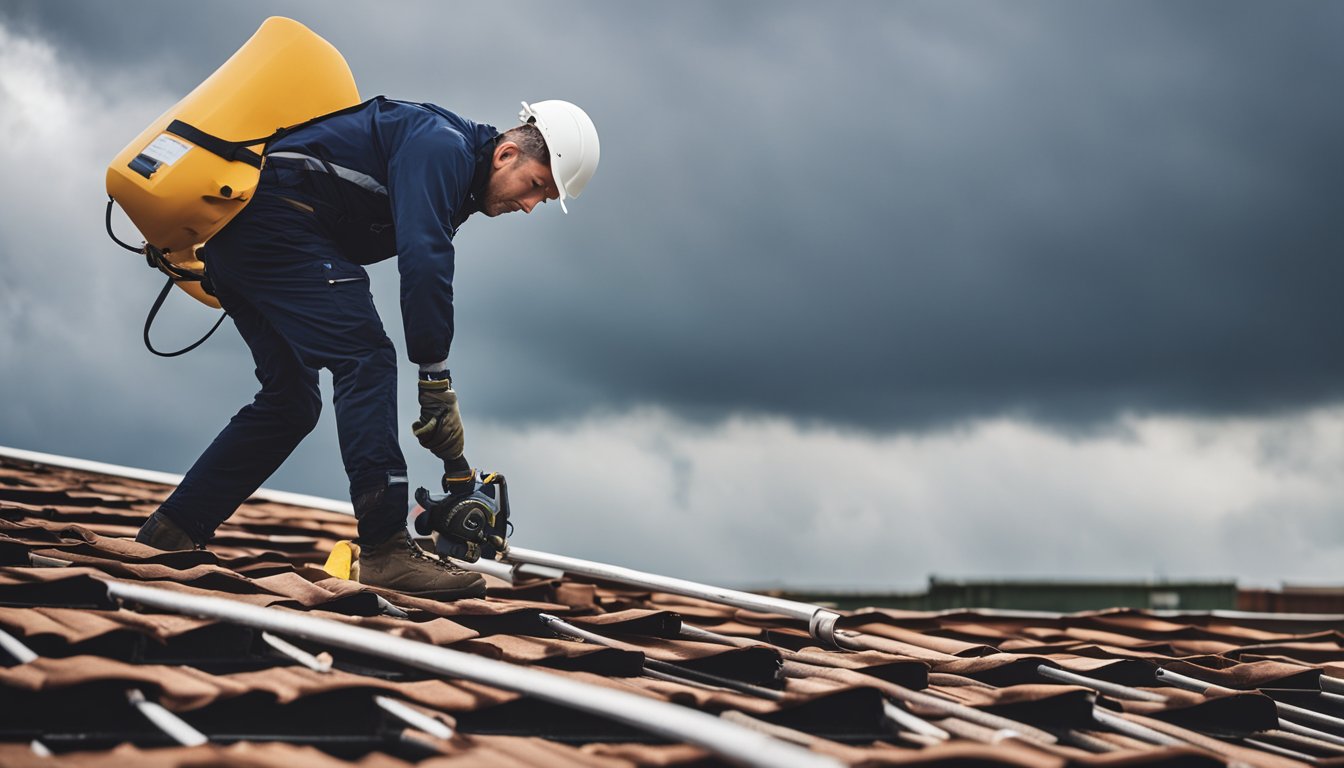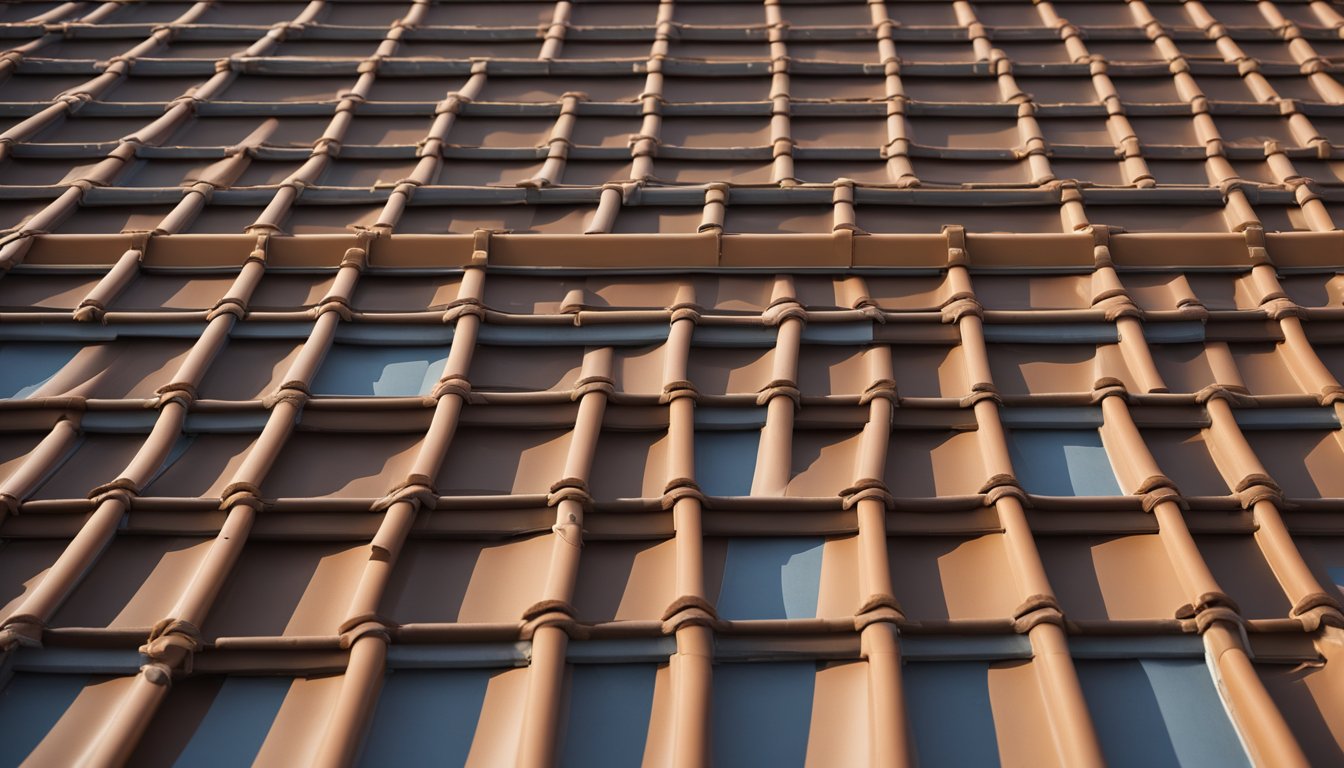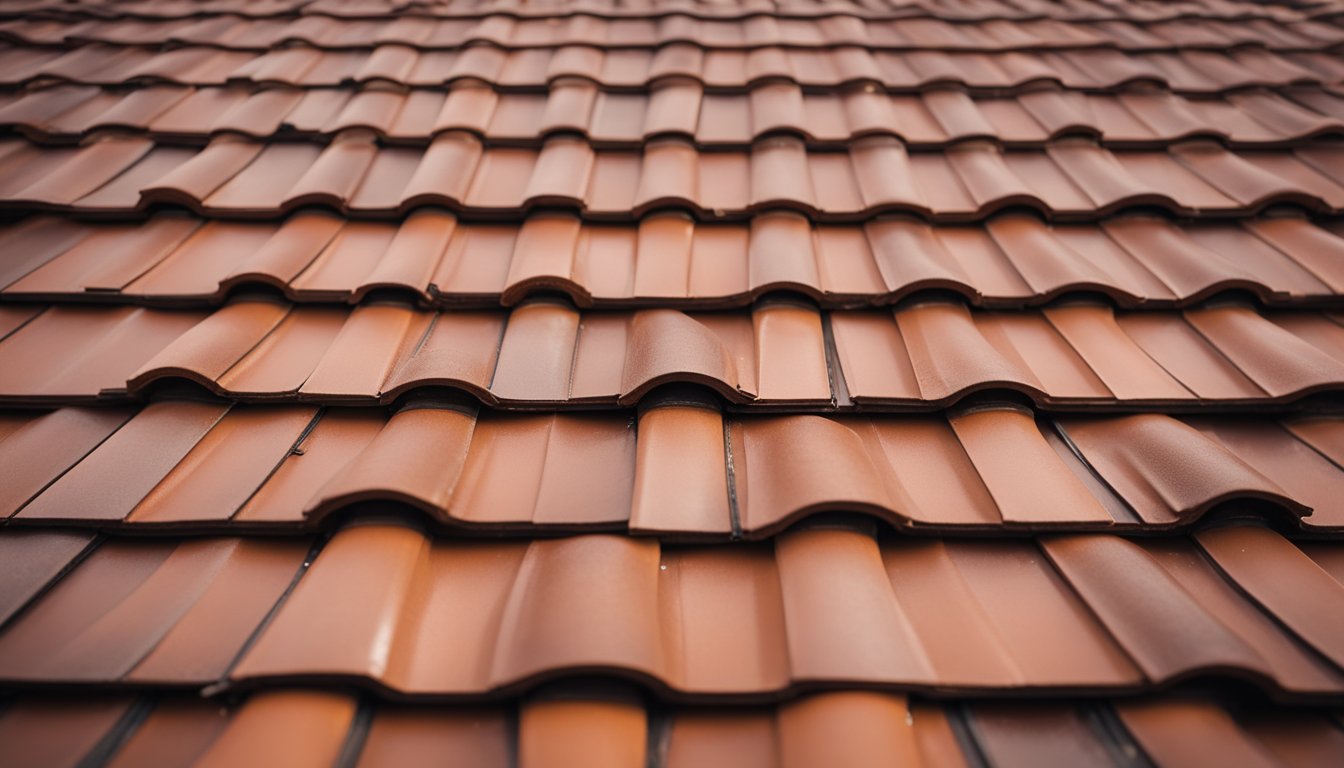Late updated: 05 Aug 2024 10:08
Written by: Oliver Bennett
Preparing Your UK Roof For Extreme Weather Conditions: Essential Tips and Advice
As homeowners in the United Kingdom, preparing our roofs for extreme weather conditions is crucial for both safety and peace of mind. Extreme weather, including heavy snowfall, gusty winds, and torrential rain, can pose significant threats to our homes. One key step to prepare is ensuring that we have robust roof insulation and well-sealed cracks to keep out the harsh elements.

A well-maintained roof is our first line of defence against the unpredictable British weather. Regularly checking and reinforcing the roof's stability can prevent damage from heavy snow or strong winds. Clearing gutters of leaves and debris allows water to flow freely, reducing the risk of leaks and water damage. We also need to be proactive in removing vulnerable branches that could cause damage in storms.
As winter approaches, it's essential to stock up on necessary supplies and keep our gutters clean to avoid complications. Ventilation is another important aspect to consider, as it helps in regulating indoor temperatures and preventing condensation build-up. By taking these steps, we can ensure our homes are better equipped to handle whatever nature throws our way.
Key Takeaways
- Ensure roof insulation and seal cracks
- Regularly check and reinforce roof stability
- Maintain clean gutters to prevent leaks
Assessing and Reinforcing Roof Stability

Preparing your roof for extreme weather involves a thorough inspection, identifying potential vulnerabilities, and reinforcing the structure with high-quality materials. It's essential to approach roof resilience with a clear focus on stability and durability.
Professional Roof Inspection
A professional roof inspection identifies the areas that need attention and often uncovers issues that are not visible to the untrained eye. Certified inspectors check for signs of wear and damage such as missing shingles, broken tiles, and other weak points. They also evaluate structural elements and ensure that all components comply with local building codes.
Regular inspections help detect early signs of deterioration. By scheduling inspections annually or after major weather events, we can take proactive measures to repair damages and prevent further issues. Utilising the expertise of a professional ensures that our roof remains resilient against adverse weather conditions.
Identifying Vulnerabilities
Identifying vulnerabilities in the roof structure is crucial to avoid potential damage during extreme weather. Common weak points include areas where materials have aged or deteriorated, improperly sealed joints, and sections prone to water pooling.
We should assess the condition of shingles, tiles, and underlayment, as well as the integrity of flashings around chimneys, vents, and skylights. Identifying and addressing these vulnerabilities reinforces the roof's stability. An assessment checklist that includes these elements helps us systematically review and fortify our roof.
Improving Roof Resilience
Improving the roof's resilience involves strengthening its structural components. Adding bracing, such as steel connectors or strapping, can increase the roof's resistance to uplift from high winds and hurricanes.
Sealing and waterproofing vulnerable areas prevent water ingress during heavy rains. We can also improve resilience by reinforcing the roof deck and ensuring that all fasteners are durable and secure. These measures collectively enhance the roof's ability to withstand extreme weather, providing peace of mind and protecting our homes.
Choosing the Right Roofing Materials
Selecting quality roofing materials is fundamental to a durable and resilient roof. Impact-resistant shingles and metal roofing materials offer longevity and can withstand harsh weather conditions. Materials should be rated for high wind, heavy rain, and impact resistance.
Metal roofs are particularly favourable for their durability and low maintenance requirements. Impact-resistant shingles provide an added layer of protection against hail and debris. By investing in high-quality materials, we fortify our roof, ensuring it remains stable and effective in protecting our homes.
In summary, focusing on professional inspections, identifying weak spots, improving structural resilience, and choosing the right materials are key steps in ensuring our roofs are ready for extreme weather.
Preparing for Weather Events

To ensure our roofs are well-prepared for extreme weather conditions, we must focus on securing them against wind and storms, enhancing waterproofing and insulation, and maintaining critical roof components. Each of these steps plays a vital role in safeguarding our homes from unpredictable and harsh weather.
Securing Against Wind and Storms
High winds and storms pose significant threats to the structural integrity of roofs. Start by inspecting and reinforcing the roof trusses and rafters to ensure they can withstand strong gusts. It's crucial to secure loose shingles or tiles and replace any that are damaged.
Trim nearby trees to prevent branches from falling onto the roof during a storm. Install hurricane straps or clips for added protection, particularly in regions prone to severe weather. This simple addition can significantly reduce the risk of roof damage during high winds.
Waterproofing and Insulation
Heavy rainfall and snow necessitate efficient waterproofing and insulation. Applying a waterproof underlayment beneath shingles or tiles prevents water damage. Inspect and seal roof valleys, flashing, and areas around chimneys and vents to eliminate leaks.
Consider installing loft insulation and draught-proofing windows and doors to maintain warmth and energy efficiency during cold spells. Effective insulation reduces the risk of ice dams, where water freezes at the roof's edge, causing potential leaks and water damage.
Maintaining and Upgrading Roof Components
Routine maintenance is essential to keep our roofs in top condition. Regularly clear gutters and downspouts to ensure proper water drainage, reducing the risk of water damage and flooding. Inspect the flashing around chimneys and vents, repairing any cracks or wear immediately.
Replace worn or damaged shingles and tiles promptly. Install high-quality materials, such as impact-resistant shingles, to provide additional protection against hail and debris. Employ a professional roofing contractor for complex repairs and ensure all work complies with current building regulations.
These measures will help us prepare our roofs for the unpredictable UK weather, ensuring they remain secure, insulated, and well-maintained.
Frequently Asked Questions

Addressing how to prepare roofs for extreme weather involves understanding specific techniques and materials. Below are key questions and answers that can help ensure your roof is ready to face various severe conditions.
How can one reinforce a roof to withstand high winds?
To reinforce a roof for high winds, it's essential to use wind-resistant materials and secure roofing components. Adding hurricane straps or clips can significantly enhance stability. Ensuring all roof tiles and shingles are properly fixed and using a water-resistant membrane adds extra protection.
What steps should be taken to ensure a roof is winter-proof in the UK?
Proper insulation and ventilation are crucial. Loft insulation helps retain heat, while adequate ventilation prevents condensation. Sealing gaps around windows and doors, and ensuring gutters are clear of debris, can prevent ice dams and water ingress.
What materials are recommended for a durable roofing system in harsh weather?
In harsh weather conditions, consider materials like metal, slate, or polymer-modified bitumen. These are known for their durability and resistance to extreme temperatures, heavy rain, and strong winds. Reinforced concrete tiles also provide excellent resilience.
How often should roof inspections occur to maintain structural integrity?
We recommend bi-annual roof inspections, ideally once in the spring and once in the autumn. Regular inspections help identify and rectify minor issues before they escalate. Additionally, always inspect the roof after extreme weather events to ensure no immediate damage has occurred.
What are the critical signs of roof damage to look out for after severe weather conditions?
Key signs of damage include missing or damaged shingles, water stains on ceilings, sagging roof sections, and visible leaks. Also, check for granules from asphalt shingles in gutters and any displacement of roof flashing, especially around chimneys and vents.
Is it advisable to install a flat roof in areas with heavy rainfall or snow?
Flat roofs are generally not recommended in areas with heavy rainfall or snow, as water pooling can lead to leaks or structural damage. If a flat roof is necessary, ensure it has a proper drainage system and is constructed with high-quality, waterproof materials. Regular maintenance is also crucial.
